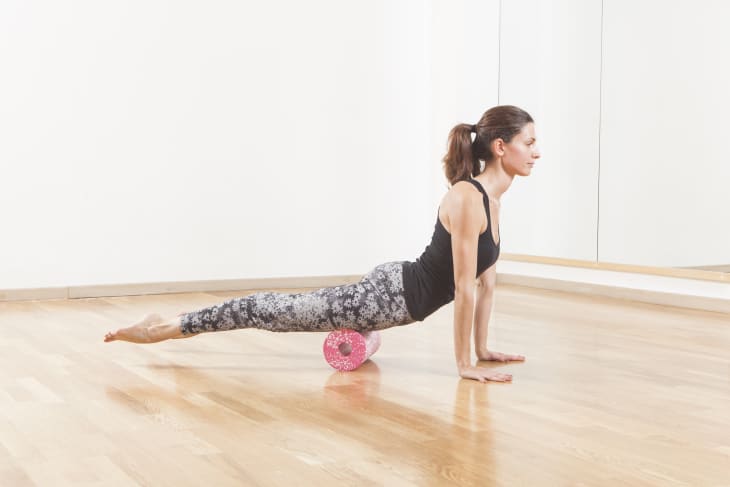Why a Foam Roller Will Change Your Life (and How to Do It)

Whether you’ve recently kickstarted a new workout plan for the New Year, you’re trying to exercise more, or you’re just trying to keep up with your current habits, one thing is certain: you cannot forget about recovery. In fact, physical therapist David Jou and co-owner of MOTIVNY, says that recovery is just as important as the exercise itself.
A good way to get started is by being more aware of your body, your muscles, and how everything works together when you work out. Enter the foam roller. You may have seen these log-like rollers around gyms or even in friends’ apartments. That’s because they can be serious game changers when it comes to recovery. And they’re small enough to tuck inside a closet or under the bed.
Foam rolling is a type of “self-myofascial release” (a fancy word for applying pressure to the muscles, like a massage); the theory behind it is that the practice can loosen up tight spots in the muscles, provide relief, and hasten post-exercise recovery. In fact, small studies have linked foam rolling to faster muscle recovery time, decreased muscle soreness, and even greater range of motion in the hips when combined with static stretching.
“It’s a therapeutic tool that can help bring awareness to certain areas of the body that are overactive, sore or tender,” Jou says.
Rolling out certain parts of your body on the foam roller can increase circulation around the area, which can help with soreness and overall mobility. If your muscles feel better and move better, you’ll be able to work out harder and more efficiently.
So where to start? First, know which foam roller is best for you, as there are many options to choose from. Jou says to go basic (like with this one from Amazon, which is just shy of $20). There are many different kinds to choose from, including ones with vibrations and spikes and promises of deeper-tissue relief. Some of these more ‘intense’ foam rollers can make foam rolling really painful, Jou says, and while the practice can be uncomfortable when you’re rolling out a trigger point, you don’t need any extra gimmicks to make it hurt more.
Once you’ve got your basic foam roller, decide which areas of the body you need to focus on. The most popular to roll out are the calves, quads and glutes. You can also roll out your upper back and lat muscles, too.
How to Roll Your Calves
To roll out your calves, position the foam roller below the underside of the knee, horizontally and lift onto the palms of your hands so all of your weight is on your calves. You can adjust how much pressure you put on the muscle by putting more weight into your hands. Then move your body forward and backward on the roller to cover your entire muscle. When you hit a tight spot, linger on it for 10 to 15 seconds and pump your ankle up and down to help work out those kinks.
How to Roll Your Quads
To roll out your quads, place the roller right under your hip flexors, with your body facing the ground like a faux push-up position. Roll up and down the quads and, when you hit a tight spot, stay on it for a bit, bending the knee up and down the same way you pumped your ankle on the quad.
How to Roll Your Glutes
For your glutes, you’ll want to target each side separately. For your left side, sit on the foam roller with your left ankle crossed over your right knee so you have more pressure on your left glute. Roll the body back and forth and put pressure where you need it most.
How to Roll Your Upper Back
To hit the upper back, an area that can get super tight with tension from stress, lie on your back position the foam roller just below your shoulder blades (where your bra strap would be) and lift your butt off the ground to put pressure into the roller. Roll up and down on the tight muscles in this area, from the upper back to the mid-back.
How to Roll Your Lats
Stay in that same position for your lats, but roll onto your side, placing the roller directly under your muscle. Move up and down, staying on a tighter spot for about 10 seconds.
“You don’t need to spend more than two minutes on each area, but practicing this every day will flesh out soreness and raise awareness to areas of the body that are bothering you,” Jou says.
It’s important to note that foam rolling is not a substitute for an injury-prevention plan or injury rehab. If you have a history of injuries or are actually injured, Jou says, see a doctor or physical therapist.